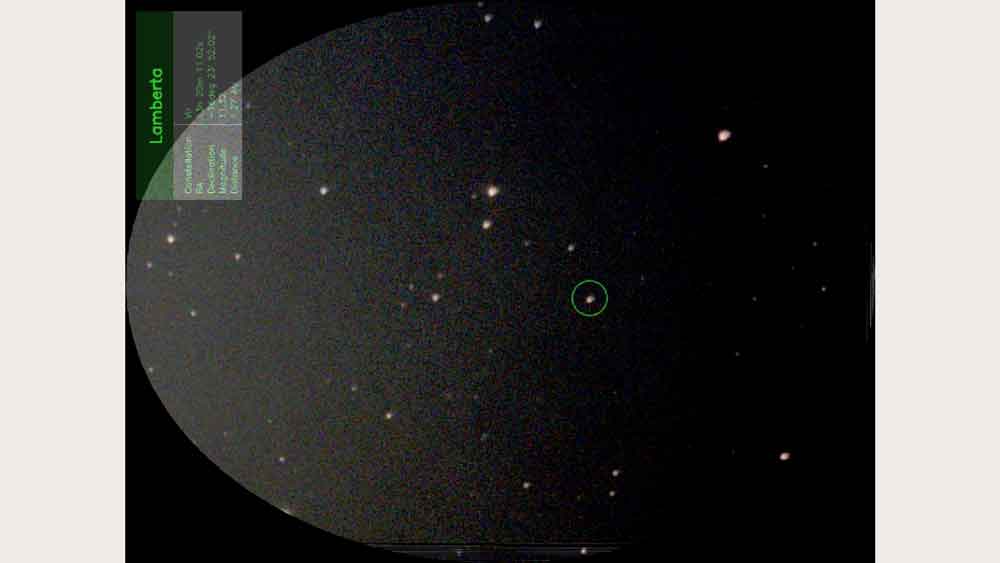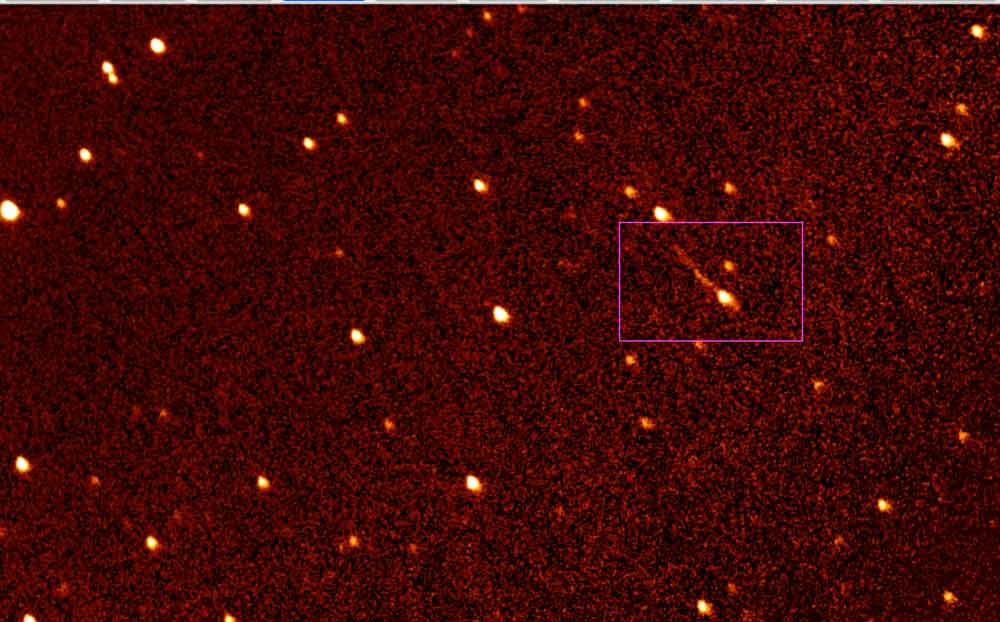
Today is Asteroid Day—and in honor of that event, we want to highlight the eVscope’s huge potential to study asteroids, including ones that may someday present a threat to life on Earth.
One promise that attracted a lot of people to the eVscope is the ability it gives users to participate in observing campaigns, especially ones focused on the study of asteroids and other small bodies that orbit the Sun. A few weeks ago, we completed work on the tool that will allow the eVscope to identify and pinpoint asteroids. We also validated our work by observing, during one single night, several main-belt and Near-Earth Asteroids (NEAs)—observations that confirmed the ability of Unistellar’s technology to contribute to planetary defense. We’re proud to report that in the near future, eVscope owners will be able to contribute to crucial research being led by space agencies such as NASA while they observe asteroids passing nearby.
Today we know of more than 754,000 asteroids in our Solar System. Some cross the orbit of the inner planets and others are very distant and located beyond the orbit of Saturn. But most are found between Mars and Jupiter in the so-called asteroid main-belt. In case you’re wondering, yes, that’s a lot of asteroids And, since they, like Earth, orbit the sun, knowing both the location and the brightness of every one of them is an immense challenge.
To help solve this problem, Unistellar’s team of scientists have worked on an innovative way to automatically point to asteroids that are bright enough to observe over the next five years.

A few weeks ago, we tested our code with our prototype eVscope in San Francisco. We selected one main-belt asteroids ((187) Lamberta) and two NEAs ((1627) Ivar and (66391) 1999 KW4) that were visible shortly after dark. The conditions were far from perfect since we were in a densely populated city, and San Francisco’s famous fog had begun rolling in.
But neither of those things stopped our mighty eVscope and its observing team. Shortly after pointing to the supposed location of our first asteroid, the eVscope’s Autonomous Field Detection (AFD) was able to identify the observed field of view and locate Lamberta. Success!
Because this main-belt asteroid is ~130-km in diameter, it's relatively bright for our eVscope (Visual magnitude Vmag~11.3), so we moved on to a bigger challenge—pinpointing and identifying smaller, fainter targets like fast-moving NEAs.
Our next target was Ivar, a large ~9km diameter NEA Amor with a predicted Vmag of 12.4, which we again easily identified with the AFD. By then, we were feeling lucky so we decided to point to a very challenging target, the small 1.3km-diameter binary asteroid 1999 KW4, which is significantly fainter with a predicted magnitude of 14.2 in visible, so a very challenging target for San Francisco.
This asteroid has been the focus of intense interest since its discovery in 1999 because its orbit crosses that of Mercury and is potentially hazardous to Earth since it occasionally comes quite close to our planet. In 2001, during one of those close approaches, astronomers used a radar antenna to take a closer look at the asteroid. From the echoes generated by this radar, they were able to confirm that the object has a small 500-meter moon called Beta and that the primary, known as Alpha, has a “top shape” and a loosely bound structure. Because of its exotic physical and dynamic properties, a study of this asteroid appeared in Science in 2006 and even made the cover of this famous journal. Needless to say, we were very excited to see it in our list of potential targets delivered by the eVscope's software.

Next, we pointed the eVscope to the expected position of 1999 KW4 which was then 50 times the distance Earth-Moon (0.12 AU). After a few moments, we saw it in the eyepiece, moving fast with respect to background stars. We observed it continuously for eight minutes. The movie below is made up of individual frames collected during this observation, which took place on June 5, 2018. We of course cannot see the asteroid’s satellite in our telescope because it’s too close to its primary—but our observations could tell us a lot about the asteroid, including its orbit (from the measured position relative to the stars) and its shape (from the variation of light due to the object’s spin). This illustrates once again how useful the eVscope can be when we want to observe and monitor the near-Earth environment for purposes of citizen science and planetary defense.
NASA recently updated its plan to detect and destroy potentially hazardous asteroids. Even if the chance of an asteroid strike is low, the consequences could be disastrous from an object as small as 50 m in diameter. In a report focused on the five ways to prepare for asteroid impacts, NASA asked that the agency “improve detection and tracking by enhancing the volume and quality of current data streams.” The Unistellar network will provide the eyes that NASA says our planet—and our species—need to observe the sky 24/7 and detect and track these dangerous objects.
A global network of eVscopes will allow us to coordinate observations of similar NEAs, relying on several hundreds of volunteer eVscope users over a few hours and even several weeks. Scientists can use this data to refine the orbit and shape of NEAs while eVscope owners use their devices to watch these objects flying through the sky. We could help NASA and other space agencies defend our planet against a potentially cataclysmic asteroid impact.
So, this is the beginning of a true era of citizen astronomy.
Clear Skies,
Franck M.
MOVIE
Animation made of consecutive frames showing the Near Earth Asteroid 1999 KW4 moving across the field of view in 8 min. This area of the sky was busy during this night with several bright bodies (probably some artificial satellites) zipping in the FOV.





